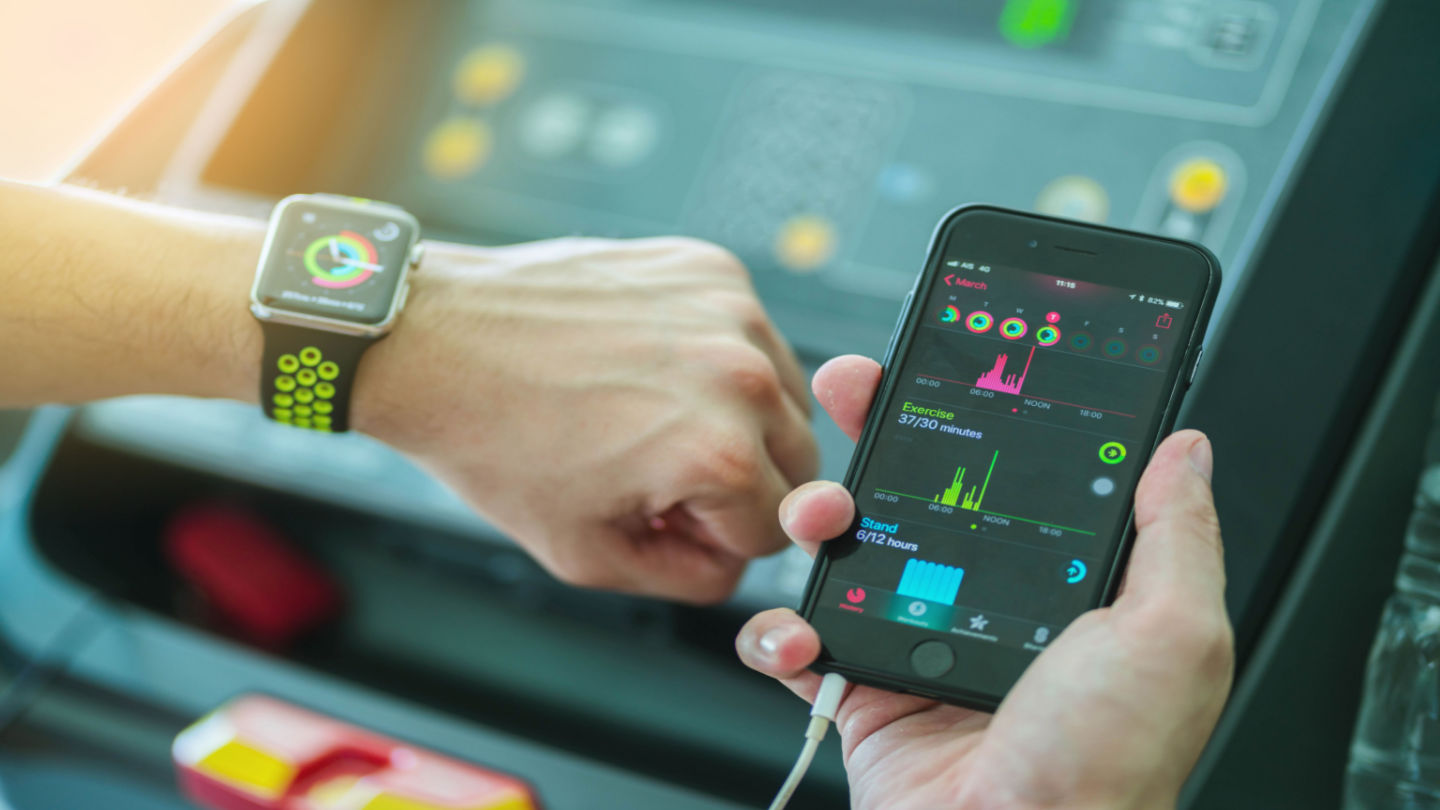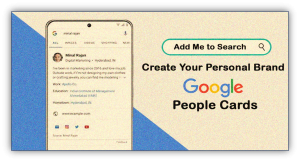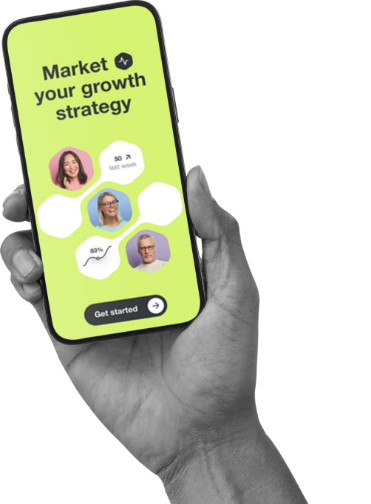In the digital world, mobile apps have engaged communities in real-time with other users. From in-app chat, voice to video in your app, live streaming events, retailing to telemedicine, and tracking health and fitness, various mobile companies are facilitating consumers and businesses to interact and perform their personal and professional tasks. With the growth of mobile traffic, android app development services have developed various user-friendly mobile applications that have attractive interfaces and easy-to-use functions. The visually appealing app designs and interface entice mobile users to build a positive experience with the app.
The market survey performed by Interaction Design Foundation, an online community that conducts UX Design Courses for industry experts stated that the latest statistics mentioned that smartphone app users globally have reached 6.6 billion in 2022-23. An average of 76% of the users have increased in developed countries including the EU, US, Australia, South Korea, and Japan. Consequently, internet traffic from smartphones is growing eventually.
Whether you are a growing business or a top-rated brand, you can rapidly reach more customers at your fingertips or boost your brand identity in the global mobile marketing by employing user-friendly mobile applications. Among other mobile apps, wearable apps have become the newest technology for both Android and iPhone users.
Reading this informative blog will help you know the significance of wearable tech for customers. What are the wearable trends most preferred by users, their existing needs changing future trends? Moreover, the blog briefly provides an overview of wearable devices existing in the market. The app users will come to know about the features and functions of wearable devices. Learning the advantages of wearable apps allow consumers and businesses to build interactive user experience with the app. The concluding part provides a preview of the advancements in wearable technology and its implications on app users, businesses, and stakeholders.
Connect to the World with the Latest Wearable Tech
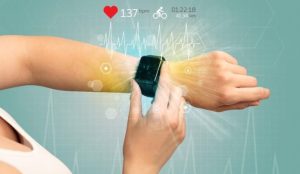
According to Stanford-HCI Research, next-generation innovative businesses have developed amazing high-tech wearable Apps for Android and iOS. From fitness to fashion, it’s all on your wrist! The device comprises smartwatches, wristbands, augmented reality glasses, earphones, and rings that keep you connected with the world. Consumer-grade wearable devices are worn on the body effectively monitor their health and fitness, and check their heart rate or sleep patterns. Moreover, the wearable devices also function as a digital wallet. They store the user’s payment information and help consumers to make secure and quick online payments.
Since wearable devices have become increasingly popular among consumers, various mobile apps for wearable devices have been introduced in the market. Along with fitness trackers, and health monitors, some other wearable gadgets help users to check the time or answer calls. Wearable speech-to-text recorders help users to take notes or record important messages. The wristbands and rings help in biometric authentication, fingerprint, or face recognition. So, wearable app users find these devices useful to fulfill their daily activities.
By tapping their wrist, the business can monitor their daily business operations. For instance, wearable technology helps managers and teams to have smooth interactions. The device improves internal communication within the workplace. Using different devices, the team stay gets connected, conveys updated information, and tracks their project output. The wristband having sensors sends raid alerts to the employees in case of mishap. Consequently, wearable tools help companies connect with other enterprises for support and take precautionary measures to avoid business risks and losses.
Wearable technology has helped maintain the data privacy and security of consumers. The companies produce modern gadgets that are secure by design and safeguard customer data. The devices are integrated with automated databases involving AI technologies. AI and machine learning tools incorporated with wearable technology help protect sensitive data. Many wearable devices have settings that allow users to control, and store significant data. The app users should review the settings and adjust them accordingly. Therefore, when customers purchase a wearable device, they should look for apps that use end-to-end encryption to protect their complex data.
Another importance of using these wearables is to create a positive and cordial workplace environment. Employing different wearables boost employees’ satisfaction at the workplace. Teams work comfortably, keep track of their ongoing tasks and manage their future goals. The productivity apps allow managers and employees to maximize their productivity and work efficiency.
Consumers’ life has become better with smart wear. The numerous benefits allow consumers to track their health and fitness, execute their exercise routines, and monitor their heart rate and sleeping patterns effectually. Thus, wearable technology provides personalized app experiences to users that help meet their specific needs and preferences.
Mobile Apps Integrated with Wearable Devices Allow Companies Know their User Persona

As companies know about consumers existing trends and requirements, they can create better wearable devices that are beneficial in monitoring their fitness, blood pressure tracking, hearing aids, and smart clothing devices that regularly observe the user’s physical condition. Smart shirts provide pulse rate and monitor body temperature, heart rhythm, and physical movement. The data is transmitted via Bluetooth to the wearable apps in real-time which offer app users a level of personalization that improve their lifestyles and needs. To provide the best user app experiences, business mobile app development services get to engage with broad market research Significant demographic information, interests, and behaviors let companies gain insights into existing market trends and customers’ needs and preferences. For instance, what category of wearables customers mostly use, where and how they would wear, and the challenges they might face in using the wearable device. Knowing the buyer’s personas will help wearable app development companies to create innovative wearables devices integrated with AI, machine learning, AR/VR technology, and 3D data visualizations that provide amazing experiences to the users. Analyzing customers’ perspectives about using numerous kinds of wearable apps helps create relevant devices that involve innovation and meet the growing needs, preferences, and trends of consumers.
Wearable tech: The Smart Wear Features elevates your lifestyle and create a bigger impact on business
1- Smart glasses help in the navigation of a location
Wearable devices comprising spectacles allow users to navigate any location or area. Using the device, people can get relevant information, they can record videos, and take pictures of the area they are searching online.
2- Observing Biometric Data
Modern wearables comprising smartwatches, fitness trackers, smart rings, or smart earbuds have the significant feature of tracking biometric data. The device record the user’s biometric data related to high calories or monitor sleeping habits. Once the device records enough data, it provides essential information to the users to meet their health goals.
3- Identifying Changes in Data
The cutting-edge wearable technology keeps users alert regarding any sudden changes in data. It could be sudden changes in heart rate or an increase in heart rhythm and pulse that may increase blood pressure or cause atrial blockage. A series of heart condition can increase the risk of stroke and leads to serious heart complications. To restore a normal heartbeat, heart patients are suggested to use a wearable defibrillator that keeps monitoring the heart pulse. Moreover, the wearable device helps track heart diseases and other mental health diseases.
4- Wearable Technologies have high glance ability
It signifies that fitness trackers such as smartwatches monitor the health-related activities of the users. Having enough glance ability, wearable devices are more focused on providing helpful information when required. The devices have simple and engaging interfaces along with readable fonts that enable the users to grasp the content easily. Build-in device sensors recognize the user’s context and adjust the content fonts accordingly. Consequently, the device ensures that users get updated information employing their wearables.
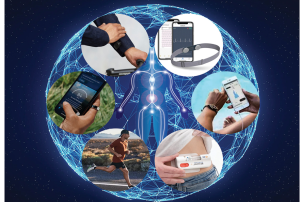
5- Logistics management
Wearable tools help the staff including experts, engineers, and technicians to acquire essential information about the wearable equipment they use to handle logistics, supply chain, and other business operations. Having modern gadgets, professionals can maintain visual data in real-time, and track their productivity while working on challenging projects. They use ring scanners and smart glasses to converse important details with offsite technical experts related to project management.
6- Smart wearables ensure the safety management of the workers
According to a survey, voice command solutions have helped increase factory logistics warehouse productivity by up to 30 percent. Workforces from industrial facilities use wearable equipment to gain important safety information to deal with emergencies. The safety features in wearables keep employees and supervisors informed about the calamity, how to manage rapid emergency evacuation, prevent injuries and boost the worker’s physical health.
7- Personalization in Wearables
Employing wearable devices provides significant information and guidance regarding the user’s health and well-being. If you are using a fitness watch to track your heart pulses, the equipment will keep monitoring your health conditions. They send personalized alerts to avoid health risks. Many users are fond of using Apple Watches. The attractive and appealing UX design and interface of the devices give a personal touch and help build a personalized relationship with the wearable devices.
The Constraints and Limitations Wearable App Users Experience
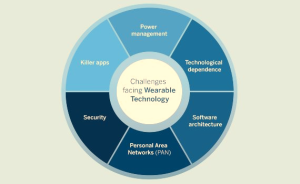
- The device requires frequent charging
It signifies that the device’s battery is fairly short, narrow, and drains quickly. For instance, the device battery of advanced wearables such as the Apple Watch may last for a day, while the Google Glass battery can smoothly work for 1.5-2 hours. However, many users continue to face the battery issue. They have to frequently charge the device which causes inconveniences and irritates many users. Furthermore, excessive charging hurt the device’s battery life. To manage battery issues, mobile app enterprise generate portable, convenient, and high-performing devices having lifelong batteries.
- A mini user interface of the device
Another hindrance the wearable users find is the small screen size of the device. A mini-size interface causes trouble for the users in reading the content. If customers feel dissatisfied, they might stop using the device. To retain customers, app developers should create a minimalistic and attractive UX/UI interface. Wearable devices must be integrated with aesthetic designs, illustrations, graphic elements, and technological compatibility that makes the wearable apps appear to be striking and friendlier for the users. Moreover, a normal-sized device with readable fonts makes the content clear and legible to the readers and increases their interest to explore the device comprehensively.
- High cost of the device
Different wearable models have different levels of complexity and functionalities that influence the level prices of the device. For instance, the fitness app having intuitive designs with engaging functions have high labor and infrastructure cost that increase the development cost. Moreover, developers use open-source tools for expensive commercial equipment that also upsurge the cost of creating and designing wearable devices. Therefore, the high price of the device also prevents users from buying high-quality wearable devices.
- The wearable apps do not perform well on multiple platforms
The users usually look for wearable apps that run faultlessly on different devices such as Android and IOS. To have smooth interconnectivity, the users employ tethered devices such as Bluetooth connections. The wireless network helps wearable apps to perform efficiently on multiple platforms.
Advancements in Wearable Technology: Meet Future Expectations of Businesses and the masses
The future is on your wrist; you have numerous options to use wearables to perform your daily tasks. From smartwatches to fitness trackers, smart glasses, headsets, and sensory clothing, wearable devices take users to the next level. The next section of the article provides significant knowledge of upcoming wearable technologies and their benefits for users.

1. Assimilation of renewable energy sources into wearable tech
The energy sources integrated with wearable apparatus will assist the users with solar charging, producing body heat and motion. Today, users spent hours charging their wearable devices. Shortly, big corporate firms will plan to generate wearable gadgets that may be easily charged through solar energy. They will get quickly charged during the daytime.
2. Wearable technology devices assist health professionals to perform remote patient monitoring
The healthcare industry has been transformed by wearable technology. Since wearable technology has grown more advanced, health experts have integrated diagnostic potential apps into wearable devices. The devices having sensor accuracy determine the correct diagnosis. Using the clinical app also enables the health experts to analyze the patient’s clinical information, learn about the physical examination, and which diagnostic tests are required to be performed. Consequently, designing new medical components in wearables comprising glucose monitoring devices, pacemakers, and heart rate monitors effectively monitors the patient’s recovery after surgery. In addition to enhancing patient monitoring through wearable devices, healthcare providers can also gather valuable patient insights and feedback using specialized survey software. This allows them to better understand patient experiences, improve the usability of wearable technology, and tailor their services to meet patient needs more effectively
3. Smartwatches combining web apps perform multifaceted tasks
The users swiping their smart wristwatches can make quick online bookings and reservations of metro cab or book flights or make online table reservations at a restaurant. The smartwatches having built-in online payment apps allow users to make secure and quick payments. By sharing their gadgets with other users, consumers have easy access to make payments via using smartwatches.
The mobile wallet app integrated into smartwatches helps customers to transfer online money to a mobile wallet. The users are required to link their accounts to the digital wallet. Instead of using ATM or business card to make payments, consumers can pay with their smartwatch.
4. Apple’s Approach to Wearable Devices
Consumers also make purchases using Apple Pay in shops, restaurants, and on online retailers’ sites. Apple Pay offers users an easy, secure method to make payments through their Apple Watch. The users are required to set up Apple Pay in the Apple Watch app on their smartphone. Once the card gets stored in the Wallet app on their iPhone, the users can add the card to their Apple Watch. Following this procedure, consumers can now proceed towards making online secure payments. The users can add their credit, debit, and prepaid cards to the wallet apps to make contactless payments and transact person-to-person payments.
Apple Watch offers a smooth navigation of shopping malls or online retailer sites. The users tap the wearable screen and enter an online store or shopping cart to explore various products. The users get essential product information and knowledge of product discounts at the time of making purchases.
As customers fill their carts with the products, they use transit cards to make payments. The cashier enters the total that gets appeared on the wearable. The customers also have alternative sources of payment, i.e. interaction between other devices. Once, the location is selected and the users make payment, a receipt is sent to Apple’s ‘wallet that offers payment confirmation.
5. Diagnose EEG brain waves
The app developers have generated Headband, an advanced wearable device that will help users to identify brain wave patterns. Modern health device incorporating AI technology consists of sensors that monitor biological data. The users will detect their EEG brain waves and send commands to the brain to perform automated tasks. The devices having augmented reality will help perform a variety of health tasks without physical intervention.
6. App gamification integrated into wearable devices
Many users have set their fitness goals but are unable to attain them. They look for apps that boost their motivation and help them stay consistent in reaching fitness resolutions. The gaming apps provide entertainment to the users in the form of interesting game, playing puzzles, and entertaining AR games. For instance, the fitness apps comprising Plaicise, Galaxy Fit, and Zombies Run provide an immersive experience to runners.
Recapitulate
Wearable technology has seen a steady growth in recent years. From tracking fitness activity to monitoring the serious health conditions of patients, wearable devices in form of smartwatches, fitness trackers, smart glasses, and headset help customers to fulfill a variety of tasks. The app developers have integrated mobile apps into wearable devices that track physical and health-related activities. The device monitors biometric data, check periodic electric pulses, and provide valuable suggestion to improve physical fitness. Furthermore, the device impact user experience by providing online shopping experiences and making secure digital payments. Moreover, wearable devices are helpful for businesses in boosting employee productivity and improving management activities. Thus, the innovative applications for wearable devices have boost fitness and health, upsurge business efficiency, and influence user experience.

